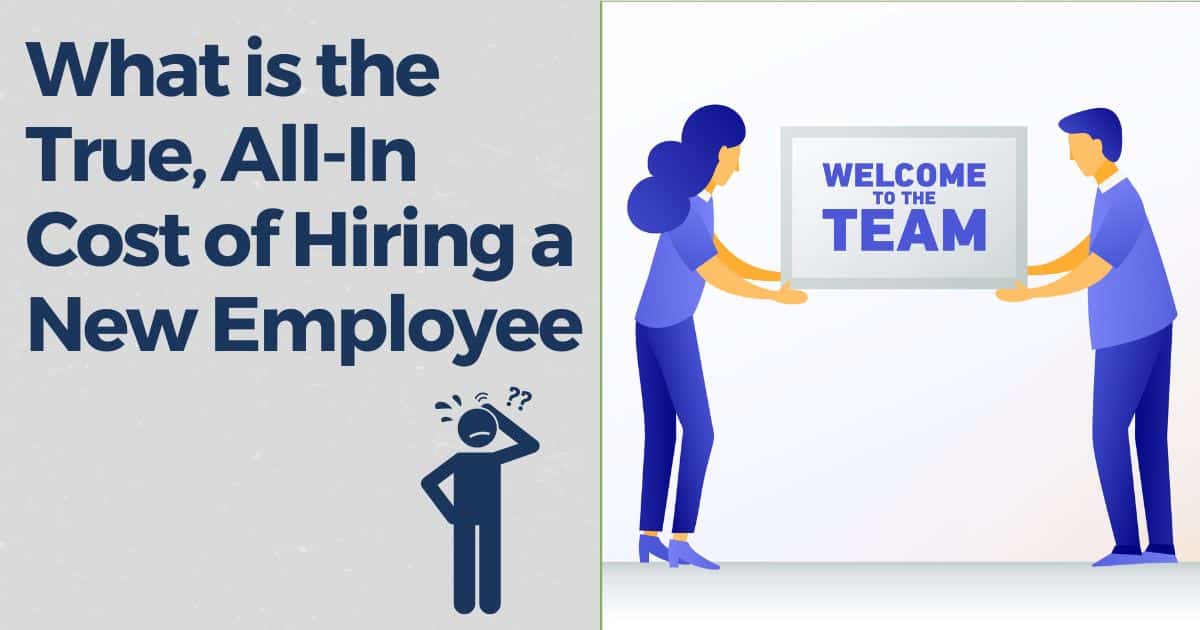
When we think about expanding our teams, it's easy to focus on the salary number we will offer. But let's have an honest chat: hiring a new employee is like an iceberg. You see the tip (salary) above the water, but the larger piece (hidden costs) is submerged beneath the surface. Hiring a new team member is often more costly than you might think. Don't worry—we've got you covered! Read on to make sure you’re “in the know” for everything that’s below the surface.
The Tip of the Iceberg - Employee Salary
Let's start with the obvious: the base salary. There are a few things to keep in mind when determining the salary range you plan to offer.
- Research Market Rates: Sites like Glassdoor and Payscale make it easy to learn about the average pay of various roles. Not only will it give you insight into how much you want to offer, but it will also show you how much a candidate will be expecting.
- Evaluate Your Budget: Depending on the role, there may be promotions or salary increases not far off for the individual in this role. Take time to look over your budget and ensure you’ll be able to keep up with the monetary incentives a superstar in this role might earn. (After all, it’s reeeally costly to hire a new employee. We’ve made the mistake of hiring the wrong person before and we learned our lesson – you can read about that here.)
- Experience & Skill Level: With many roles, there’s a variety of experience levels to hire for. Consider that spread and create a salary range to reflect it.
Beneath the Surface - Additional Costs
When you welcome a new team member aboard, you also sign up for additional costs beyond their paycheck.
- Employee Benefits: Oh, the beauty of a comprehensive benefits package! Medical, dental, vision insurance and a retirement plan are excellent ways to attract the best talent. However, these can add 20-30% to your base salary. Yes, you read that right! It’s important to take care of your employees, but it’s something you need to think about as you prepare to hire. If you’re wondering how to determine your full-in cost for employee benefits, click here.
- Paid Time Off (PTO): Everyone loves a good vacation. But remember—when your employees are sipping cocktails on a beach, you're effectively paying for that time. For a $50,000 salary, three weeks of vacation costs you nearly $2,884.
- Training Costs: New hires need training, and although there's no direct cost here, the time lost in production is worth noting. If a week's productivity equates to $2,000 in revenue, that's a cost you must consider.
- Recruitment Costs: The effort of attracting top talent can quickly add up. Advertising, interviews, and onboarding all have their price tags. Let's ballpark this at a few thousand dollars.
- Equipment & Overhead Costs: Remember the tools needed to do the job. Workspaces, computers, software, utilities - every little bit adds to the total cost.
- Employer Payroll Taxes: Uncle Sam is always part of the equation. With Social Security, Medicare, and unemployment taxes, you're looking at roughly an additional 7.65% of gross pay.
What's the Total Amount for Hiring a New Employee?
When you tally it all up, the actual cost of hiring an employee is often estimated to be 1.25 to 1.4 times the base salary. That employee earning between $50,000 and $100,000 might cost your company somewhere between $62,500 and $140,000.
The Silver Lining: You're making an investment in growth
The figures may seem daunting, but remember that hiring a new employee is also an investment; an investment in new ideas, your company's growth, and the service you provide to your clients. So, while it's essential to understand the costs associated with hiring, don't let them overshadow the potential benefits. As always, take time to understand your numbers and plan accordingly. Consult with your financial advisor or HR consultant to get a precise calculation and make the best decision for your business growth. Stay informed, stay prepared, and remember, every new team member is a new opportunity!
Looking for more hiring resources? Check out our blog on the 4 Ingredients for Hiring the Right Candidate or, if you’re hiring out of state, Everything You Need to Know about Hiring a Remote Worker in a Different State.
Topics: